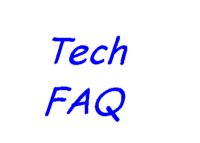

We receive many calls and enquiries about whether our system offers sequential injection. Many people asking this question don't even know what this is but they insist that they must have it.
Timed vs. Batch
Sequential is a bit of a misnomer. Technically, all EFI systems are sequential in that once all cylinders have been injected, the sequence starts from the beginning again. A better term would be timed, implying that the starting and finishing of the injection pulse is timed with the intake valve opening. The idea behind this is to spray fuel only when airflow in the intake runner is established. This is supposed to mix fuel and air better and reduce manifold wall wetting. The other injection strategy is batch fired where several injectors are triggered simultaneously and not timed to the intake valve open period. In effect, the fuel sits in the runner for a short period of time before the valve opens and the airflow carries the mixture into the cylinder. Some people are dismayed that anyone would use the batch fired method however, there were tens of millions of Bosch and Bosch derivative systems sold in the '60s, '70s, and '80s which worked just fine using batch firing. It is a very well proven concept indeed. The SDS is also a batch fired system. The timed concept was developed mainly for tougher emission laws and EPA cycle testing where much of the cycle is run at low rpm and part throttle, where the time available to inject is long and the injector pulse is short.
Performance Applications
Performance applications are somewhat different from stock applications. Rpms are generally much higher, fuel flow rates are much higher and emissions usually take a back seat to power output. As rpm increases, the amount of time available to inject the fuel decreases. This is true whether the system is timed to valve opening or batch fired. The batch fired system has the advantage of being able to inject fuel for the entire period of crankshaft rotation whereas the timed system technically only has the time available that the air is flowing in the intake runner. This is determined mainly by the camshaft characteristics. On an average performance cam having 220 degrees of intake duration measured at .050 valve lift, the sequential system has only 61% of the time to inject the fuel as the batch fired system. As such, true, timed, sequential systems must have larger injectors fitted for a given hp. It should be remembered that there is little airflow and velocity in the port and runner until the valve is open a fairly significant amount. Starting the injection sequence early and finishing late, partially negates the supposed advantages of timed injection. On a high revving engine, there are only a few milliseconds available to inject before the next cycle begins. On the other side of the coin, with batch fired injection, the amount of time that the fuel sits in the port shortens as rpm increases. In the end, there are no significant differences in top end, wide open throttle, horsepower between batch fired and timed systems. We have also not seen any significant differences in fuel economy between the two strategies. Emissions at part throttle are likely to be better with timed injection as this is what it was developed for. On performance applications, emissions are often not an issue and most engines not equipped with a catalyst will not pass a modern emissions standard anyway.
Complication and Expense
Batch fired EFI systems are far less complicated from a software and hardware standpoint so it stands to reason that they will be less expensive to purchase and easier to program. Timed systems require camshaft timing information for the ECU either derived from a camshaft sensor or a multiple input signal from the crankshaft sensor. Timed systems also require a drive transistor for each injector, a separate trigger wire for each injector, cam timing specs, injector response time specs, cylinder firing order and the software to process the information. The person programming also requires a lot more knowledge on how all these aspects inter-relate to each other and the wiring for the injectors becomes much more complicated. If any of these steps are omitted or misunderstood, the timed system is no longer timed. Additionally, there are some aspects about intake port flow that very few people would have a clue about. You'd really be taking a bunch of guesses about when to start injecting and stop injecting the fuel. Is all this worth the trouble on the average performance/race application for little or no gain in hp? Would YOU understand how to hook up and program a sequential/timed system? I think those questions have already been answered. The batch fired system merely requires a tach frequency. Generally, for each ignition pulse, there is a fuel pulse. There are less wires to run and no complicated timing software to figure out. Very simple and it works very well.